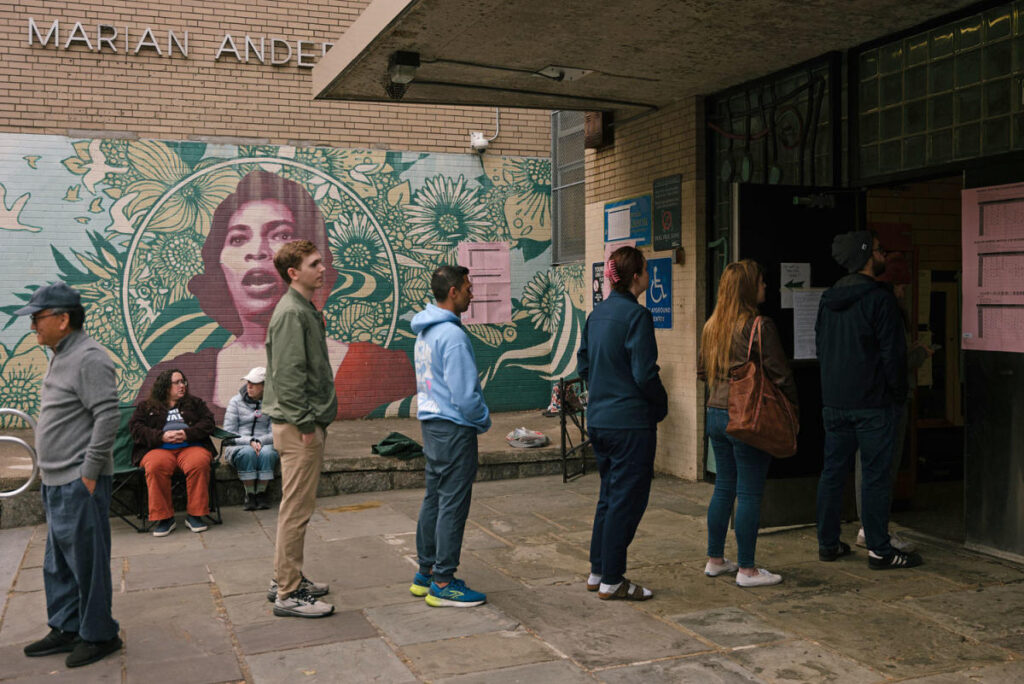A recent NBC News Decision Desk analysis has revealed critical dynamics behind the electoral outcomes in three states—Michigan, Wisconsin, and Pennsylvania—following the presidential election, focusing on the disappointing turnout among Democratic voters in urban areas. As President-elect Donald Trump successfully secured victories in these traditionally Democratic states, Vice President Kamala Harris faced significant losses, primarily attributed to lower voter participation in major cities. In her 2024 electoral strategy, Harris aimed to reclaim the states that formed the historically robust “blue wall,” but ultimately fell short, with data indicating notable declines in voter turnout compared to the previous election cycle in these Democratic strongholds.
The analysis highlighted clear trends in individual counties, showcasing a stark contrast between Democratic and Republican voter turnout. Each county was mapped to illustrate the shifts in voter engagement—those above the 0% line represented counties with increased turnout, while those below indicated a decrease. Notably, major counties like Wayne in Michigan, Philadelphia in Pennsylvania, and Milwaukee in Wisconsin exhibited significant drops in voter turnout, undermining Harris’s overall performance despite her winning margins within urban centers. While she garnered a majority in these cities, the turnout numbers indicated a more substantial decline compared to President Biden’s success in 2020.
In Philadelphia, the drop in votes was particularly striking, with an analysis revealing that around 73% of its precincts reported fewer voters than in 2020. This resulted in a 2.9% overall decrease, equating to approximately 20,000 fewer ballots cast in 2024. Conversely, the rest of Pennsylvania experienced a slight uptick in voter engagement. The comparison between urban and rural turnout showcased Harris’s struggle to motivate her base, specifically in regions traditionally pivotal for Democratic successes.
Wayne County, specifically the city of Detroit, presented an even steeper decline in voter turnout, with the number of participants falling by 4%. While overall turnout in Michigan slightly increased by 2.6%, Detroit’s demographic contours, predominantly consisting of Black voters, saw a notable decrease in engagement. As the data indicated, Harris’s support among Black voters remained relatively stable; however, the lower overall participation rate meant that fewer votes could be leveraged to secure victory. In marginal terms, Harris forged ahead in support yet still faced disadvantages as more voters opted out of the election.
The situation in Milwaukee diverged from that in Philadelphia and Detroit, as it experienced a slight overall increase in voter participation by approximately half a percentage point. However, an analysis of the precincts indicated that over half reported diminished voter turnout. Contrasting Milwaukee’s numbers with those in Dane County—another significant Democratic area with growth in participation—revealed a demographic dichotomy affecting electoral performances. The population decline in Milwaukee, paralleled by a growth spurt in other urban centers, raised questions about the long-term viability of maintaining Democratic support in these traditional strongholds.
Demographic profiling illustrated further distinctions between Milwaukee and Dane County, with a significant difference in educational attainment and racial makeup. Milwaukee had only about a quarter of its residents holding college degrees, contrasting sharply with the 50% rate in Dane County. Importantly, voters with college degrees constituted one of the few demographic areas where Harris outperformed Biden’s previous numbers, hinting at potential strategies for future Democratic campaigns to focus more intensively on education-driven appeals as they navigate dwindling support in metropolitan areas. Overall, the analysis of the voter turnout patterns revealed substantial hurdles ahead for Democratic candidates in maintaining influence within the urban centers that had long served as electoral bastions.

